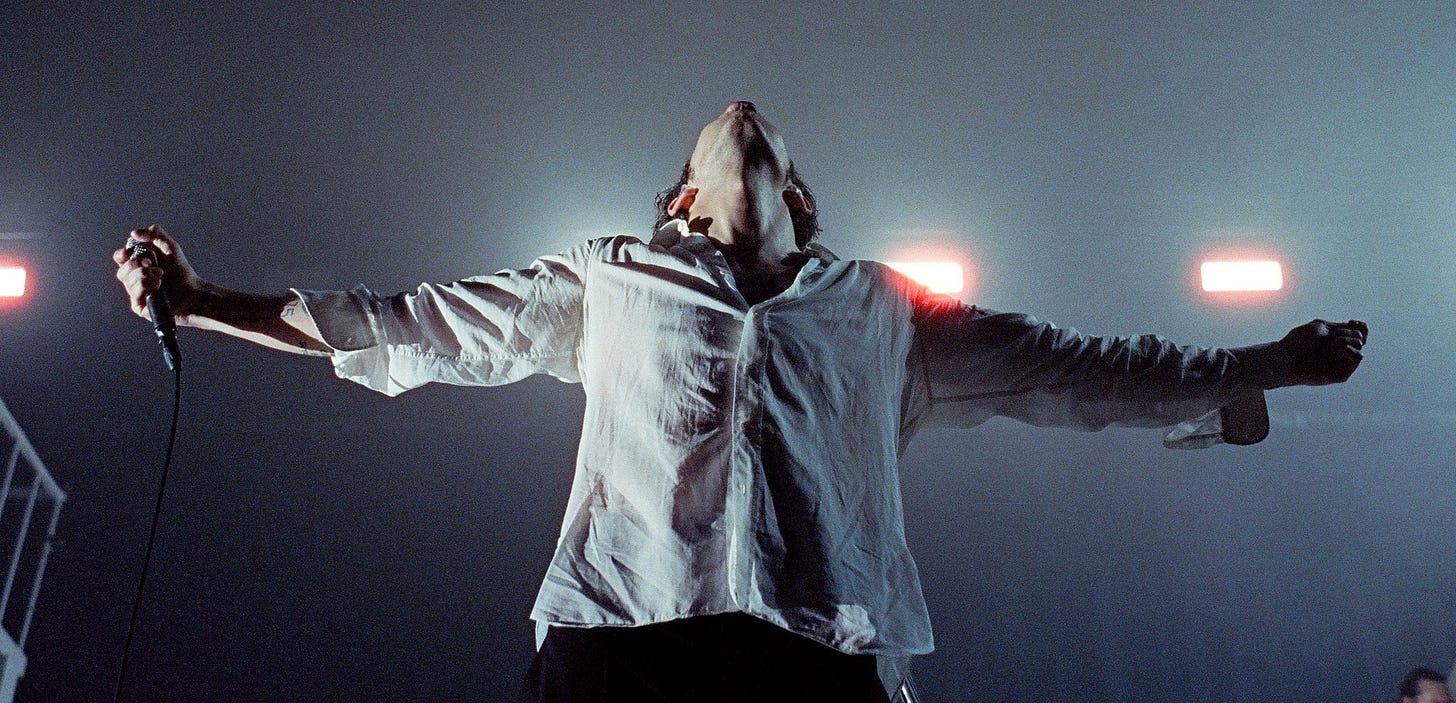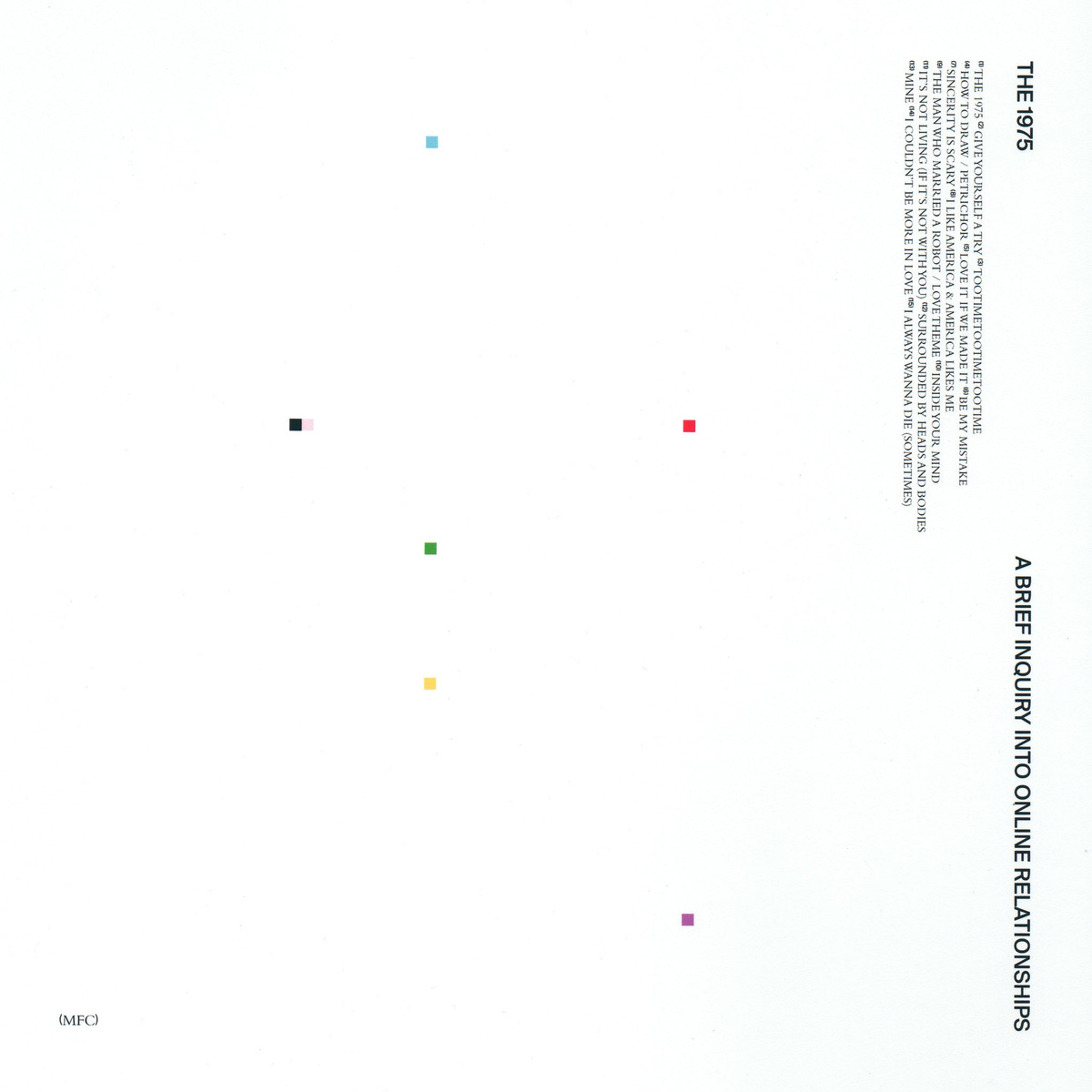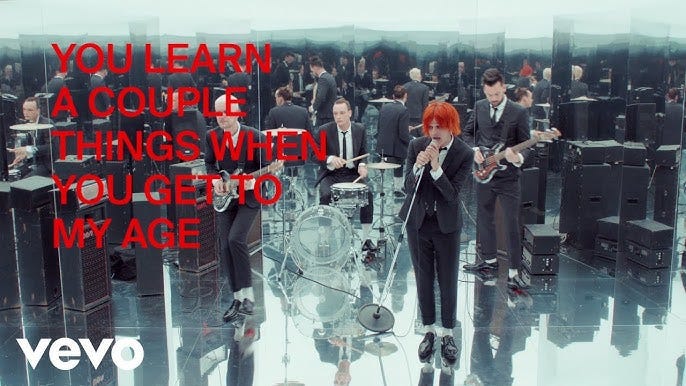The Public Misinterpretation of The 1975
A band that had the potential to reinvent modern music culture, and how they got it completely wrong.
“Jesus save us, modernity has failed us.”
— The 1975
Well, here it is. Some thoughts and unbiased opinions.
The cultural trajectory of The 1975 presents a compelling case study in the disconnect between artistic intention and public reception in digital-age media landscapes.
The music trajectory of The 1975 across four albums reveals how digital-age cultural production navigates the intersection of emotional intimacy and political messaging. However, to claim their reception represents "misinterpretation" misunderstands how cultural meaning functions in mass media environments. Having followed their evolution from early Tumblr-era discovery through international recognition, it becomes apparent that what appears to be misinterpretation may actually represent accurate reading of cultural contradictions inherent in their project from the beginning.
After years of sustained critical engagement, their meanings have not been misunderstood - they have been accurately identified as contradictory.
Long before Spotify, I'd save money to buy CDs at our small town shop. The act of choosing without knowing brought me intense excitement and drove my brain slightly insane, should I pick albums I knew I liked, or test my preferences blind?
At 11, I chose The 1975's self-titled debut. I couldn't tell you why I spent my pocket money on a deluxe version of an album I didn't know over another pop punk replica, but that sleek luminescent white lightbox on black backdrop genuinely spoke to me.
I rushed home, told my mother I was doing homework, and cracked open my shitty CD player. As a chaotic neutral child who didn't understand listening to albums cohesively, I hit shuffle. "Fallingforyou" started playing.
I sat and listened. And thought. I googled the lyrics, watched a YouTube video staring at four young guys in hoodies and ripped skinny jeans in what looked like a city tunnel. After listening three times, my pre-teen brain concluded: this is complete shit. Dry, boring, muffled, instrumental-less, incoherent fucking shit.
I didn't touch the record for months. Eventually I got an iPod shuffle and downloaded all my CDs, including The 1975's album, which I ignored until one night at my Nana's.
Lying in the spare room, music on shuffle as I tried to sleep, "Facedown" came on. I closed my eyes, let myself listen with an empty mind, and felt the lighthearted beauty of that song, sinking into it until it finished. When I opened my eyes, I realised…
This wasn't an accidental discovery - it was calculated cultural positioning that understood how meaning travels through communities, conversation and sound. Well, I was 11, so maybe not that abstract, but I basically felt really "in-the-moment."
The transformation from initial confusion to eventual understanding that many listeners experienced wasn't evidence of artistic complexity, but successful deployment of cultural codes requiring specific digital literacy to decode. So, does that make it artistic complexity?
Utilising social media as a tool; that cultured positioning travelled online too.
A month later, The 1975 released "I like it when you sleep, for you are so beautiful yet so unaware of it."
And oh. Fuck.
The 1975 (2013): Digital Intimacy as Cultural Code
Their debut established sophisticated visual and sonic languages for digital-native emotional experience.
When I first encountered their self-titled album in 2015, through the specific cultural pathways of small-town CD shops and emerging social media landscapes, the aesthetic framework was immediately legible even when the musical content initially felt like alienating-nonsense-pop to some Green Day kid. The white rectangle, minimalist design, and carefully constructed melancholy functioned as cultural shorthand requiring specific digital literacy to decode.
While other artists were still operating within defined genre categories, The 1975 created a hybrid language that moved seamlessly from ambient instrumentals to pop hooks to noise experiments within a single cohesive statement. Their production techniques - the use of space, reverb, and texture to create intimacy without lo-fi degradation - established a new template for digital-age recording that countless bedroom pop and indie artists would later adopt.
Songs like "Fallingforyou" operated through what could be termed "artificial cultural intimacy", shared understanding of symbolic references that created in-group identification among listeners navigating similar digital emotional landscapes. It was calculated cultural positioning that understood how meaning travels through online communities, particularly Tumblr's aesthetic-driven spaces where emotional vulnerability became cultural currency.
I Like It When You Sleep (2016): Scaling Intimacy
The sophomore album pioneered a new approach to album construction for the streaming era. At 75 minutes, the album should have felt bloated, but their understanding of narrative flow created cohesion that worked both as background listening and focused engagement. They integrated genre-blending within individual tracks - jazz interludes flowing into electronic pop, gospel influences merged with indie rock - in ways that predicted how artists across all genres would approach songcraft in the present day.
Lyrically, the album represented a quantum leap in articulating digital-age romantic and social anxiety. Songs like "Somebody Else" captured the specific torture of social media stalking ex-partners: "I don't want your body but I hate to think about you with somebody else." This wasn't generic heartbreak - it was the particular emotional landscape of seeing former intimacy performed publicly online. "Love Me" functioned as both pop perfection and savage critique of attention economy culture, operating simultaneously as genuine plea and satirical commentary on social media narcissism.
The album's sophistication lay in its ability to inhabit contradictions rather than resolve them. They weren't just describing modern relationship dynamics - they were creating new emotional vocabulary for experiences that hadn't been adequately articulated in popular music before.
A Brief Inquiry Into Online Relationships (2018): Public Access and Distribution
This album marked their most direct examination of digital culture itself - not as aesthetic backdrop, but as the fundamental mechanism shaping contemporary social relationships. The work functioned as a direct conversation about public access and distribution of emotional experience, examining how digital platforms mediate intimacy, identity, and political consciousness.
The response proved their revolutionary potential. Unlike previous work consumed by existing fans, this achieved commercial success (#1 UK) and serious critical engagement. Major publications treated it as important cultural commentary. They'd proven audiences wanted pop music taking social conditions seriously, that musical experimentation could enhance political messaging while reaching massive audiences.
Once again, rather than offering solutions, the album interrogated the infrastructure of digital relationship itself. The emotional intimacy that had characterised their earlier work became explicitly political through analysis of how technological platforms shape the conditions under which intimacy becomes possible or impossible. This represented a more sophisticated understanding of digital culture as material rather than merely aesthetic phenomenon.
Notes on a Conditional Form (2020): Environmental Politics and Pre-COVID Consciousness
Their fourth album represented a remarkable moment of environmental political engagement that arrived just before global pandemic conditions transformed the entire framework for understanding social relationship and political possibility. The collaboration with Greta Thunberg and sustained focus on climate anxiety demonstrated extraordinary timing and political sophistication.
The environmental messaging functioned through direct political advocacy rather than aesthetic suggestion, representing perhaps their most successful integration of emotional intimacy with material political analysis. The album's release timing- emerging into a world suddenly confronting the fragility of social and economic systems- gave their environmental politics an urgency that their previous work had struggled to achieve.
However, the pandemic fundamentally altered the cultural context for reception of their climate messaging, creating temporal displacement between their political intervention and the conditions under which it could be meaningfully received.
Being Funny In A Foreign Language (2022): The Masculinity Project
Their most recent album represented direct intervention into toxic masculinity, specifically targeting young male audiences potentially vulnerable to right-wing recruitment. This reflected growing awareness among cultural producers of their role in shaping political consciousness, particularly given documented connections between cultural alienation and political radicalisation. However, this is where they got it wrong, whether the band intended it or not; This album marks where revolutionary potential collapsed into cultural management.
Rather than providing genuine alternatives to toxic masculinity, the work inadvertently offered aesthetic frameworks that could accommodate existing problematic behaviours while providing progressive cultural legitimacy. The emotional empathy they attempted to model became divorced from the political analysis necessary to address structural causes of male alienation. But is this not what they’ve always done? Close, but no cigar.
The musical innovation that had enabled their cultural analysis was replaced by conventional approaches that relied on lyrical messaging rather than formal , integral experimentation.
This retreat to musical safety undermined their political project. Without sonic innovation forcing new ways of listening, their progressive messaging became decorative rather than transformative. They stopped making music that created new experiences and started making music that communicated existing ideas - the difference between revolution and management.
They chose not to push musical boundaries, or even start conversations; they focused on managing messaging and responding to criticism.
The Digital Deflection
When confronted with criticism regarding their cultural influence, their response centred on technological determinism - attributing misinterpretation to digital technology's inherent properties rather than examining their own choices regarding cultural messaging and platform engagement. This is where they got it wrong.
This deflection strategy is particularly notable given their previous sophisticated analysis of digital culture's role in shaping meaning and relationships. From the perspective of someone who experienced their early work through the specific digital pathways it was designed to navigate- Tumblr communities, intimate online fandoms, carefully curated aesthetic spaces- their later retreat from responsibility for those same digital dynamics appears contradictory. A revealed distance from the sophisticated digital culture analysis that characterised their best work.
They abandoned musical innovation that made their cultural analysis powerful, choosing safety over the formal experimentation that had enabled their political effectiveness.
Beyond Misinterpretation
The trajectory reveals several critical insights about contemporary cultural politics.
First, sustained cultural analysis across multiple years and media platforms produces interpretive consensus rather than confusion. The 1975 has not been marginalised or misunderstood - they have been extensively covered, analysed, and debated.
Second, their evolution illustrates how aesthetic and sound innovation can become divorced from political transformation when cultural production remains embedded within commercial frameworks that prioritise individual consumption over collective organisation. The visual and emotional vocabularies they developed, while sophisticated in analysing contemporary social conditions, proved readily adaptable to less progressive political projects.
Finally, their case demonstrates the inadequacy of existing frameworks for cultural responsibility in digital environments, where traditional boundaries between private artistic expression and public political influence have become increasingly blurred.
My experience of watching their aesthetic vocabulary become divorced from its original cultural context - seeing the visual language that once felt intimately connected to specific forms of digital experience become broadly commercialised -illustrates how cultural meaning transforms through mass distribution.
Rather than representing interpretive failure, The 1975's reception reflects sophisticated public engagement with cultural contradictions that the artists themselves have struggled to resolve. The "misinterpretation" exists not in public understanding, but in the original premise that aesthetic and music innovation could substitute for sustained political organisation. Their trajectory demonstrates that emotional intimacy and political effectiveness require different cultural strategies, and conflating them produces the exact contradictions their audiences have accurately identified.







